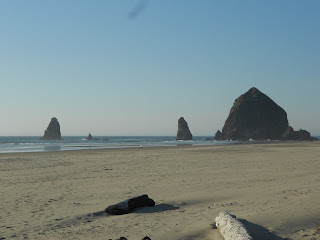If your western road trip takes you through the Lone Star State, San Antonio is a must stop. The list of things to do in San Antonio Texas is a large one. Visit San Antonio to enjoy a wide range of fun family activities.
 |
| San Antonio's River Walk |
In this article we want to point out some great tourist sites in San Antonio outside of the popular theme parks. Some you certainly have heard of and some perhaps not.
The Alamo and the River Walk
Many people connect San Antonio with the historic Alamo. The Alamo is surely one of the top tourist attractions in Texas and is located in the city center not far from the San Antonio River. Visiting the city itself is easy and signage directing you to the various sites is very good. The Alamo and the River Walk are only a few blocks apart and visiting both is a must. The River Walk attracts a lot of people and the best times to stroll along it usually are the morning or early evening.
 |
| The Alamo |
The Alamo was the very first mission in the area. Years later a string of missions numbering five total would be built by the Spaniards southward along the San Antonio River. A tour of the Alamo and it's expansive grounds is a trip into history. The remaining Spanish missions stretch southward roughly along the San Antonio River.
See our Western Trips photo article on the San Jose Mission and directions to the San Antonio Missions National Historical Park.
Seeing San Antonio By Trolley
This is a one hour tour that takes you to the heart of San Antonio. Historic sites and cultural attractions are on the itinerary of this narrated trip. The trolley tour is an excellent way to see some good sites while at the same time learning about the history attached to them. A one hour tour is easy to fit into any trip itinerary.
 |
| Majestic Theater |
One interesting historic site on Houston Street in downtown San Antonio is the Majestic Theater. This theater was designed and built in 1929 for Karl Hoblitzelle's Interstate Theatres. The Majestic at one time was regarded as the largest theater in Texas and the second largest motion picture theater in the entire country. In 1975 the Majestic Theater was added to the National Register of Historic Places. The theater today is operated by the Majestic Foundation and is the venue for concerts and all types of performing arts entertainment.
The Empire Theater was created in 1890 from what was the Empire Opera House on this site dating back to 1879. It was operated as a family theater until 1899. In 1913 a new Empire Theater, the one seen now, was built and operated until 1978. The theatre was originally equipped with an electric lighting system and stage equipment for motion pictures and vaudeville. In 1988, the City of San Antonio bought the neglected theatre, and through the work of the Las Casas Foundation, funds were raised to restore the Empire to its original luster. The Empire was reopened in April 1998 as the Charline McCombs Empire Theatre and is owned by the city of San Antonio.
 |
| Empire Theater |
San Antonio's Historic Pioneer Flour Mill
This is a stop in San Antonio that you do want to consider making. The old Pioneer Flour Mill and Guenther House is located in the King James area of San Antonio.
This mill was started by a German immigrant named Carl Hilmar Guenther who originally settled in the Texas Hill Country town of Fredericksburg. The story about the Pioneer Flour Mill is a very interesting story about German immigration into frontier Texas. At the site is a wonderful museum within the Guenther House along with an award winning restaurant. Add to this beautiful gardened grounds. The museum now houses mill memorabilia including antique baking accessories, cookie cutters and anniversary Dresden china plates which were given to customers by the mill. The site address is 203 E. Guenther Street, San Antonio.
See our Western Trips article on the founding of Pioneer Flour Mill by Carl Guenther in 1851.
Visit San Antonio to enjoy the south Texas culture, it's long history, it's unique museums, it's family theme parks and it's beautiful Spanish and Victorian architecture.
(Photos from author's private collection)
View Larger Map






























.jpg)








